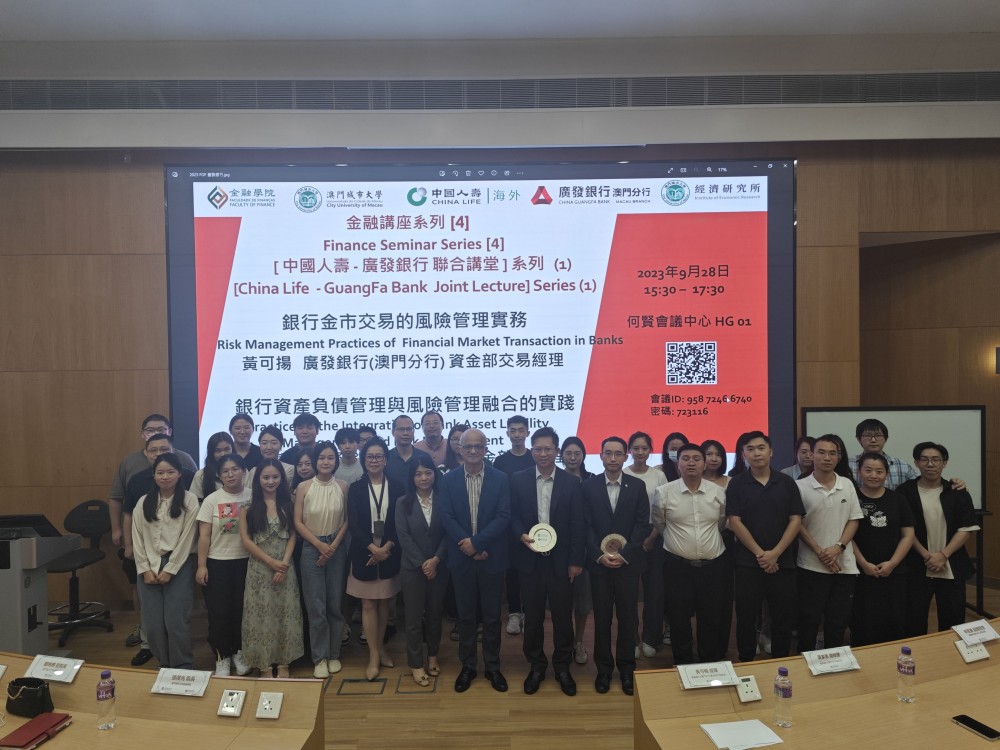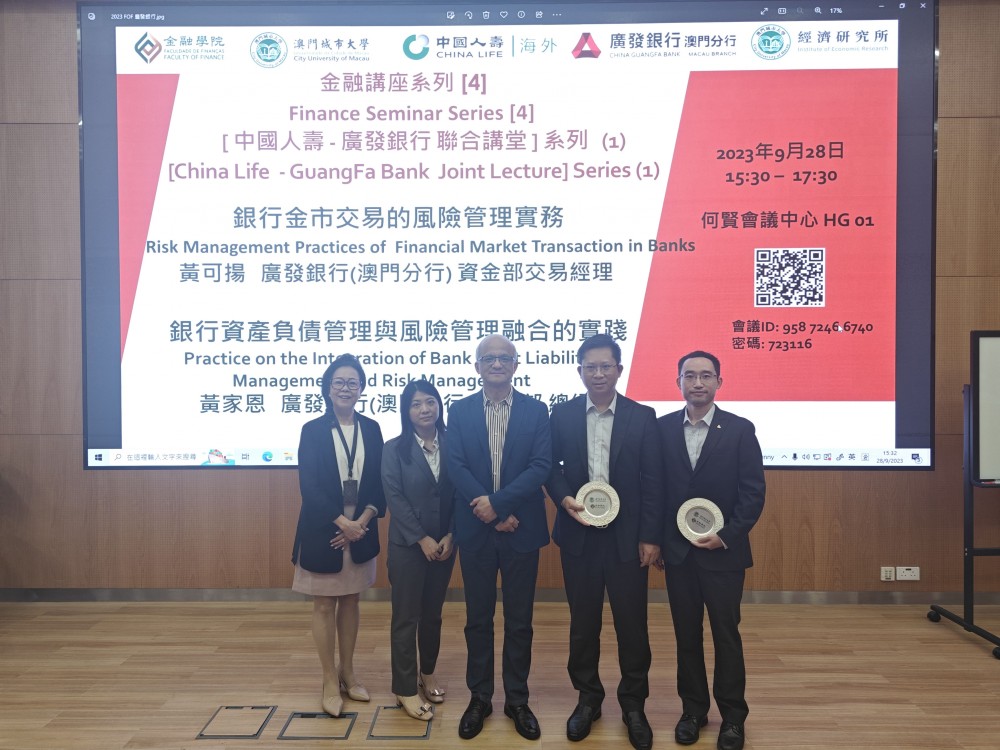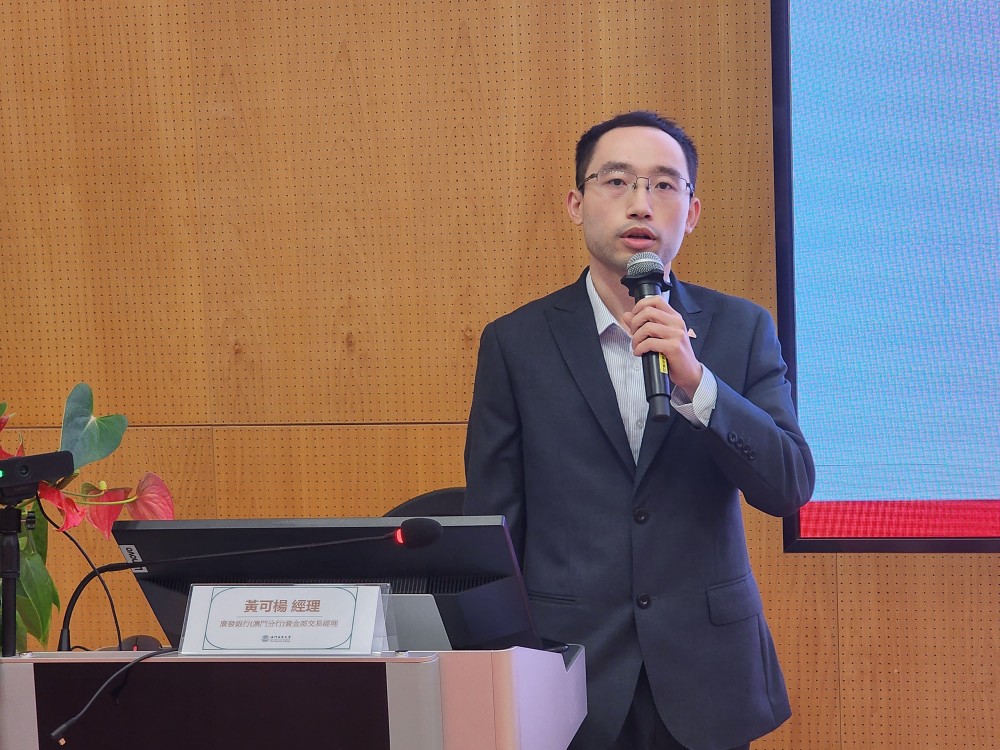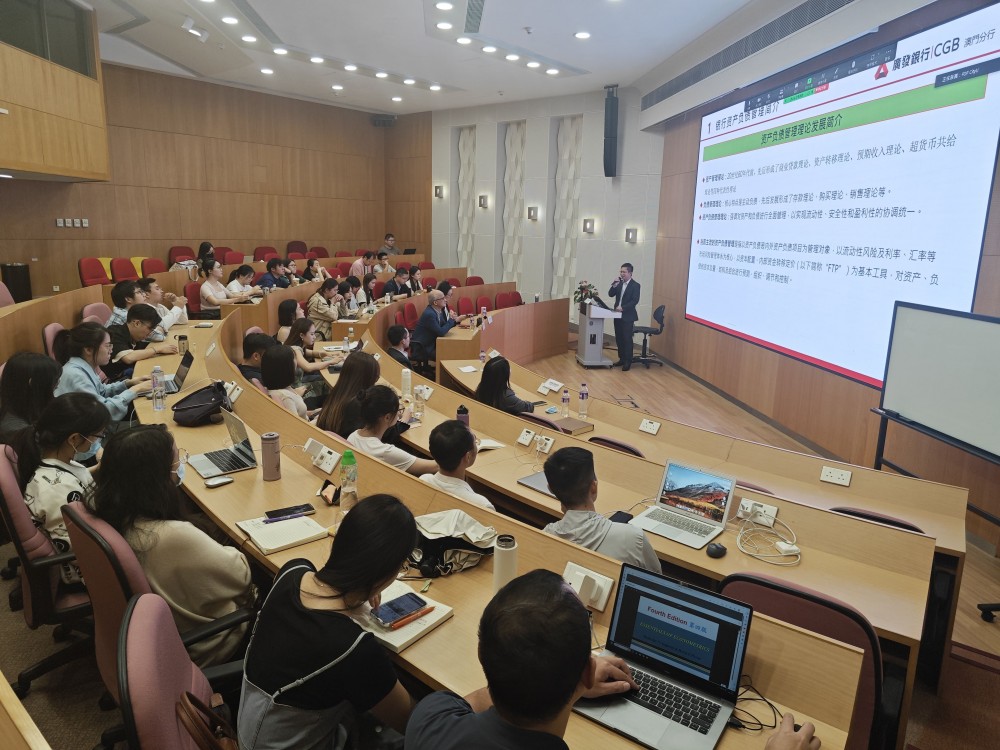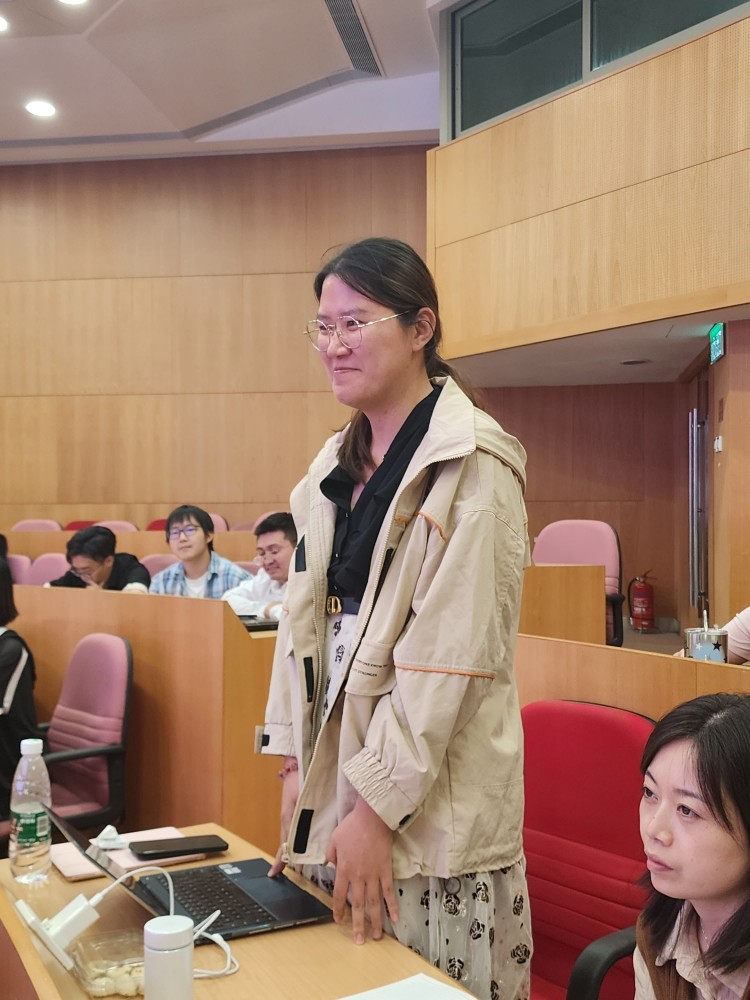On September 28, 2023, the School of Finance at the City University of Macau hosted the China Life-Guangfa Bank Joint Lecture Series (1) at the He Xian Conference Center. The guest speakers for this lecture were Mr. Huang Keyang, Trading Manager of the Treasury Department at Guangfa Bank Macau Branch, and Mr. Huang Jia'en, General Manager of the branch. They shared their expertise on the topics of "Risk Management Practices in Bank Treasury Trading" and "Integration of Bank Asset Liability Management and Risk Management Practices." Other attendees included Mr. Lin Baoguo, Deputy General Manager of the Corporate Banking Department at Guangfa Bank Macau Branch, and Dean Adrian Cheung and Associate Dean Eva Khong of Faculty of Finance, City University of Macau.
Firstly, General Manager Huang Jia'en introduced bank asset liability management. Bank asset liability management is a comprehensive management approach aimed at achieving coordinated unity between assets and liabilities to pursue the optimal balance of liquidity, safety, and profitability. The mainstream approach to asset liability management focuses on managing assets and liabilities on and off the balance sheet, with the core being the management system for market risks such as liquidity risk, interest rate risk, and exchange rate risk. It utilizes capital allocation and internal fund transfer pricing (FTP) as fundamental tools to predict, organize, adjust, and control assets, liabilities, total capital, structure, and composition.
General Manager Huang also introduced bank risk management. Bank risk management aims to effectively identify, quantify, and control various risks to ensure the bank's sound operation and sustainable development. Risk management encompasses the risk management process, risk identification, expected loss, unexpected loss, and tail loss, risk factors and correlation analysis, market structure changes, agency problems, and conflicts of interest, risk classification, risk measurement and integration, risk-return balance, and comprehensive risk management. Through sharing the case of the collapse of Northern Rock, he pointed out that in the face of macroeconomic upheavals, financial institutions should prudently manage risks in their operations. Only through flexible asset liability strategies, risk diversification, and effective risk management can bank better cope with external shocks and ensure their own sound development.
Then, General Manager Huang Jia'en explained the practical aspects of bank asset liability management. The practical plan for bank asset liability management aims to ensure that asset-liability allocation is aligned with the macroeconomic environment, meeting internal management requirements and regulatory policy guidelines. Through effective asset liability management, banks can reduce risk, enhance sound operational capabilities, and maximize the value of their funding positions. Continuously evaluating and adjusting asset liability management strategies will help banks maintain a competitive advantage in an ever-changing market environment. Finally, General Manager Huang Jia'en shared the major categories of asset liability allocation among the main banks in Macau with the students.
Next, Manager Huang Keyang discussed market risk and liquidity risk. Financial institutions use various means and tools, such as foreign exchange risk exposure, to measure and monitor risks in order to manage interest rate risk and exchange rate risk. These data are typically managed in a unified manner by the system, consolidating data from across the entire bank. At the same time, financial institutions implement front-end control measures to respond, including regularly providing bond portfolio details, foreign exchange risk exposure data, and outstanding derivative transaction details to the middle office. Financial institutions apply for exposure limits as needed and monitor their usage in real-time to ensure they do not exceed risk limits. In addition, periodic reevaluation of portfolio gains and losses is also part of front-end control.
When faced with liquidity risk, financial institutions need to hold sufficient high-quality liquid assets and ensure stable sources of funding. Manager Huang used Silicon Valley Bank as an example, pointing out that liquidity risk is an important issue that requires high attention and management even in well-performing financial institutions. Financial institutions should closely adhere to relevant regulatory requirements and implement effective control measures to ensure the reasonable management of risks and the sound operation of their business. In sectors such as real estate, local financing platforms, and the steel and coal industries, financial institutions need to closely monitor credit risks and take appropriate front-end control measures when making investments.
Finally, Manager Huang discussed operational risk. Operational risk can be categorized into internal fraud, external fraud, employment practices and workplace safety, clients, products, and business practices, physical asset damage, business disruption and system failures, and execution, delivery, and process management. He used different cases to illustrate internal and external fraud risks, business continuity risks, operational risks, compliance risks, and the relevant front-end control measures those financial institutions need to implement.
After the sharing session, students actively asked questions related to banking, and both Manager Huang Keyang and General Manager Huang Jia'en responded comprehensively and shared their insights. This lecture has made students more aware of the issues related to risk management in the banking industry, and the School of Finance will continue to invite experts from various fields in the financial industry to share their knowledge with the students and enrich their understanding of finance.



